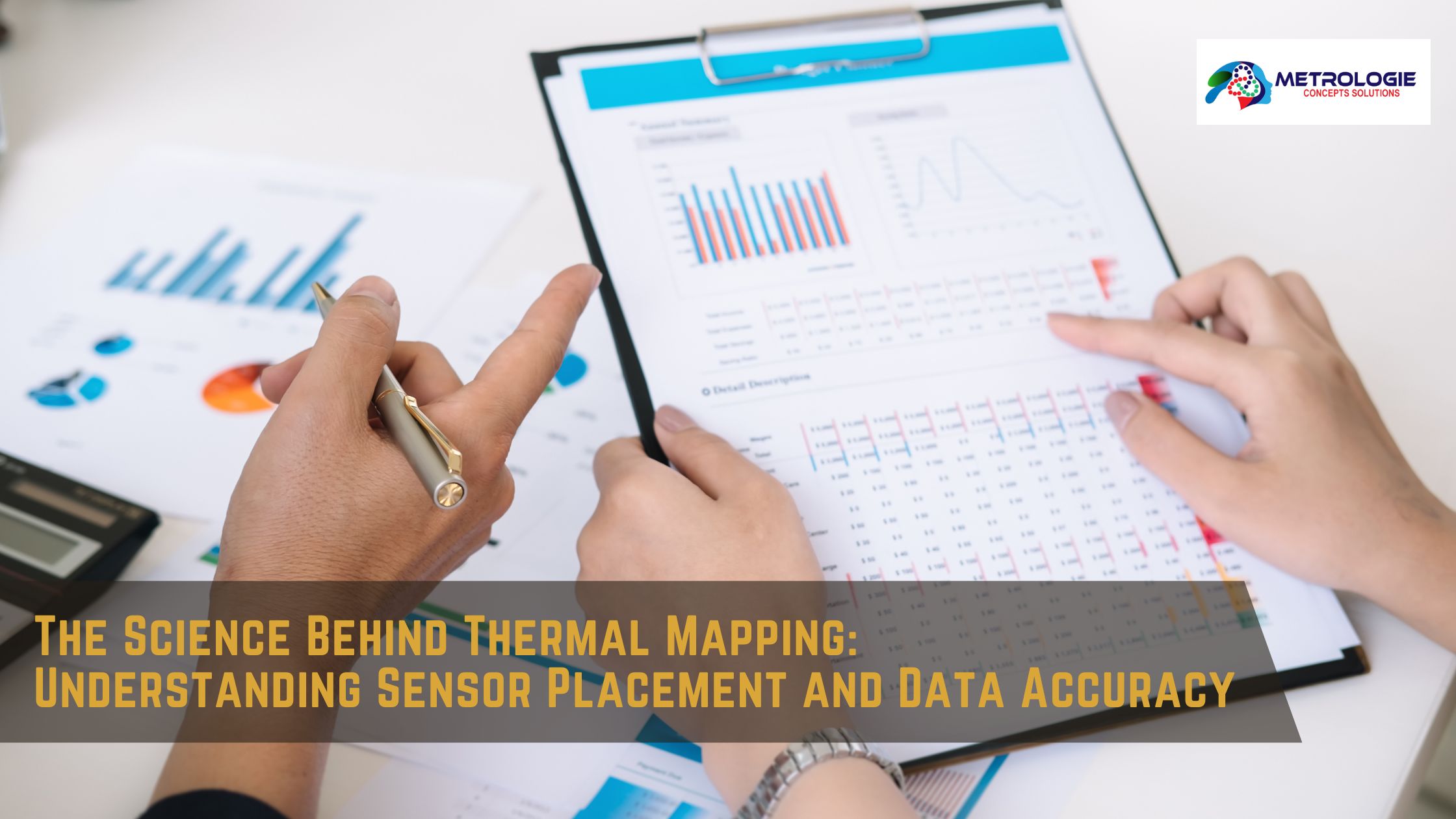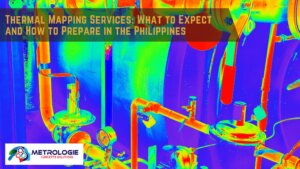Thermal mapping, a powerful non-destructive testing technique, utilizes infrared sensors to capture and visualize temperature variations across surfaces. This technology has revolutionized various industries, from building inspections and industrial maintenance to medical diagnostics and environmental monitoring. However, the accuracy and reliability of thermal mapping data are intrinsically linked to the strategic placement of sensors and a comprehensive understanding of the underlying scientific principles. This article delves into the science behind thermal mapping, meticulously examining the crucial role of sensor placement and its direct impact on data accuracy.
The Foundation of Thermal Mapping: Infrared Radiation and Sensors:
Thermal mapping relies on the principle that all objects emit infrared radiation, a form of electromagnetic radiation invisible to the human eye. Infrared sensors, the core components of thermal imaging systems, detect and measure this emitted radiation. These sensors convert the infrared radiation into electrical signals, which are then processed and displayed as a thermogram or thermal image, revealing temperature distribution patterns.
The Crucial Role of Sensor Placement:
The placement of infrared sensors is not arbitrary; it’s a critical factor that directly influences the accuracy and reliability of thermal mapping data. Strategic sensor placement minimizes errors, optimizes data capture, and ensures that the resulting thermograms accurately reflect the thermal behavior of the target object or area.
Factors Influencing Sensor Placement and Data Accuracy:
- Target Object Geometry and Size:
- Impact: The shape and dimensions of the target object dictate the optimal sensor placement to ensure complete coverage and accurate temperature measurements.
- Considerations: For complex geometries, multiple sensors or scanning techniques may be required. For small objects, high spatial resolution sensors and close proximity are crucial.
- Distance and Angle of Measurement:
- Impact: The distance and angle between the sensor and the target surface affect the accuracy of temperature measurements due to atmospheric absorption, reflected radiation, and sensor field of view.
- Considerations: Minimize the distance between the sensor and the target to reduce atmospheric absorption. Maintain a perpendicular angle to minimize reflected radiation and ensure accurate measurements.
- Environmental Conditions:
- Impact: Ambient temperature, humidity, and airflow can affect the accuracy of thermal mapping data.
- Considerations: Account for ambient temperature variations during data analysis. Control environmental conditions whenever possible. Minimize airflow to prevent convective heat transfer, which can mask temperature anomalies.
- Material Emissivity:
- Impact: Different materials exhibit varying emissivities, affecting the amount of infrared radiation emitted at a given temperature.
- Considerations: Apply emissivity correction based on the material being inspected. Use materials with known emissivities as reference points.
- Reflected Radiation:
- Impact: Surfaces can reflect infrared radiation from other objects, leading to inaccurate temperature readings.
- Considerations: Minimize reflected radiation by adjusting the sensor angle or using reflective shields.
- Atmospheric Absorption:
- Impact: Water vapor and other gases in the atmosphere can absorb infrared radiation, affecting measurements, especially over long distances.
- Considerations: Account for atmospheric absorption, especially when measuring over long distances. Use shorter wavelength cameras for high-temperature applications.
- Sensor Field of View (FOV):
- Impact: The sensor’s FOV determines the area it can measure at a given distance.
- Considerations: Select sensors with appropriate FOVs to ensure complete coverage of the target area. Overlapping sensor FOVs can improve accuracy.
- Sensor Calibration and Accuracy:
- Impact: The accuracy and calibration of the infrared sensor directly affect the accuracy of thermal mapping data.
- Considerations: Regularly calibrate sensors using traceable standards. Use sensors with high accuracy and stability.
Optimizing Sensor Placement for Data Accuracy:
- Strategic Positioning:
- Description: Position sensors to capture the most relevant temperature variations and minimize interference from external factors.
- Implementation: Use multiple sensors to cover large or complex areas. Utilize sensor arrays for detailed temperature mapping.
- Optimal Distance and Angle:
- Description: Maintain an optimal distance and angle between the sensor and the target surface to minimize measurement errors.
- Implementation: Use laser pointers or distance measurement tools to ensure accurate positioning. Adjust the sensor angle to minimize reflected radiation.
- Environmental Controls:
- Description: Control environmental conditions to minimize their impact on data accuracy.
- Implementation: Conduct thermal mapping inspections in controlled environments whenever possible. Use environmental sensors to monitor temperature and humidity.
- Emissivity Correction:
- Description: Apply emissivity correction based on the material being inspected.
- Implementation: Use thermal imaging software to adjust temperature readings based on material emissivity. Use materials with known emissivities as reference points.
- Reflected Radiation Mitigation:
- Description: Minimize reflected radiation by adjusting the sensor angle or using reflective shields.
- Implementation: Use reflective shields to block reflected radiation from nearby objects. Adjust the sensor angle to minimize reflections.
- Atmospheric Absorption Compensation:
- Description: Account for atmospheric absorption, especially when measuring over long distances.
- Implementation: Use shorter wavelength cameras for high-temperature applications. Apply atmospheric correction algorithms during data analysis.
- Sensor Calibration and Maintenance:
- Description: Regularly calibrate and maintain sensors to ensure accuracy and reliability.
- Implementation: Follow manufacturer’s calibration guidelines. Use traceable calibration standards.
Applications and Sensor Placement Considerations:
- Building Inspections:
- Sensors are placed to identify insulation defects, air leaks, and moisture intrusion.
- Considerations: Cover all external walls, roofs, and windows. Account for solar loading.
- Electrical Maintenance:
- Sensors are placed to detect hot spots in electrical components and connections.
- Considerations: High spatial resolution sensors for small components. Multiple angles for complex assemblies.
- Industrial Process Control:
- Sensors are placed to monitor temperature-sensitive processes and equipment.
- Considerations: High-temperature range sensors for furnaces and kilns. Real-time monitoring for dynamic processes.
- Medical Diagnostics:
- Sensors are placed to detect temperature variations associated with medical conditions.
- Considerations: High thermal sensitivity sensors for subtle temperature changes. Controlled environment for accurate measurements.
- Environmental Monitoring:
- Sensors are placed to monitor temperature variations in natural environments.
- Considerations: Account for atmospheric absorption over long distances. Weatherproof sensors for outdoor applications.
The Future of Sensor Placement and Data Accuracy:
Advancements in sensor technology, data analysis, and artificial intelligence are continuously improving the accuracy and reliability of thermal mapping. Future developments will likely include:
- AI-Powered Sensor Placement: Automated sensor placement optimization using AI algorithms.
- Hyperspectral Thermal Imaging: Expanding the spectral range for detailed material analysis and temperature measurements.
- 3D Thermal Mapping: Creating 3D models of temperature distribution for complex objects and environments.
- Integration with IoT: Enabling real-time monitoring and remote sensor control.
- Self-Calibrating Sensors: Developing sensors with self-calibration capabilities.
Key Takeaways:
- Sensor placement is critical for accurate and reliable thermal mapping data.
- Factors such as target object geometry, distance, angle, and environmental conditions influence sensor placement.
- Optimizing sensor placement involves strategic positioning, environmental controls, and data correction.
- Specific applications require tailored sensor placement strategies.
- Technological advancements are continuously improving sensor placement and data accuracy.
By understanding the science behind thermal mapping and applying best practices for sensor placement, professionals can unlock the full potential of this technology and gain valuable insights into the thermal behavior of various objects and systems.




